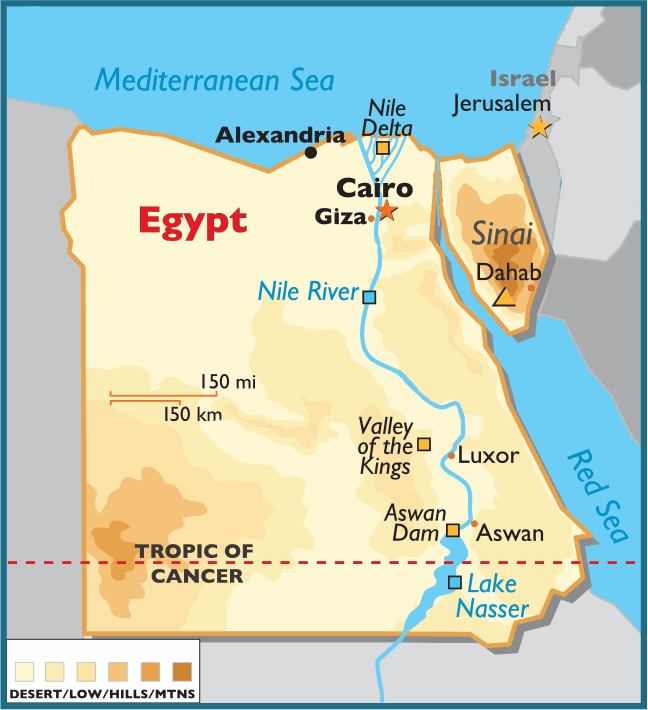By Tyson Thorne

Early last week it was announced that a new pyramid had been found in Egypt, about 25 miles south of Cairo in the Dahshur Necropolis (see map) along the Nile’s west bank. This discovery, announced by world-renown Mahmoud Afifi, the head of Egyptian Antiquities, is important on a number of levels. It is the oldest pyramid yet discovered, and its misshapen form may indicate it is the first attempt to build such a structure. Furthermore, it appears to have been undiscovered since its burial in the desert sands, keeping it free of looters. It has already yielded important finds.

Work is progressing quickly. Already excavated is a corridor leading inside the pyramid to a great hall, which branches out to a ramp and a room on the west side. A large bean and stone blocks have been uncovered here, support structures, that help us understand the interior design. One of the blocks is covered in hieroglyphs (currently being translated) which is hoped to identify the builder. The base of the structure was built upon clay and gravel, which is why its sides deteriorated and lead to a revised building plan for later pyramids. The Red Pyramid was built next, and its sides stood the test of time.
It will be interesting to see what other finds and inscriptions yield, but what does this have to do with Thinkin-Biblically.com? The first settlers of North Africa was the san of Ham (yes, the Ham that was on the ark), named Mizraim (Genesis 10), which explains why Egypt appeared on the scene with a dearth of culture and a written form of language. In those days rulers were entombed in mud brick edifices called mastabas. By the third dynasty King Zoser’s vizier Imhotep designed a better tomb using stone blocks. Not satisfied with merely improving a tomb, he later built it into a six step structure called a step-pyramid, or ziggurat. This was the first of its kind and lead to the development of this pyramid in the fourth dynasty by Egypt’s greatest designer, Senefuru.
It is likely this newly discovered pyramid began its construction about the time of Abraham’s death and would have been completed a couple decades before Joseph became governor of Egypt. This pyramid would have been known not only to all of Joseph’s family, including his father Isaac, but to all the Israelites who lived in Egypt thereafter – both those who prospered and those who were made captives and enslaved.
We’ll bring you updates if anything Biblically significant is found, and hope this fuels your passion for archeology and history.
|
|
